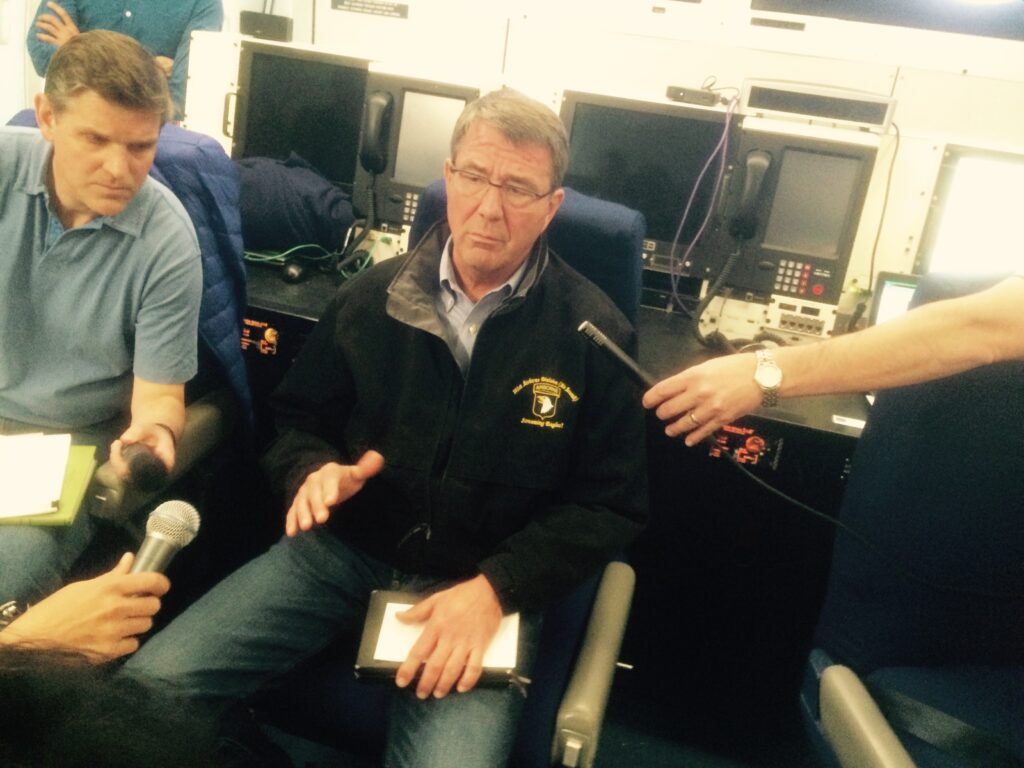By COLIN CLARK
CAPITOL HILL: Most of the system that allows the president to launch nuclear weapons and to know what the enemy is doing with theirs is ancient. Everyone agrees the Nuclear Command, Control and Communications system (NC3) must be replaced. No one yet agrees what it must replaced with.
And, of course, no one knows how much it will cost, although late last month the Congressional Budget Office issued an estimate of $77 billion. Bill LaPlante, former head of Air Force acquisition and now head of the MITRE Corp’s defense and intelligence sector, said today he thinks that’s too high, but did not offer his own figure.
LaPLante was speaking at a Mitchell Institute and MITRE event on the Hill unveiling a new report they produced, Modernizing US Nuclear Command, Control and Communications. Regardless of whether it will $77 billion or more or less, there was general agreement at the event that if America is to build and maintain a credible nuclear deterrent then NC3 modernization is absolutely required and Congress must fund it.
The 62 systems that together comprise the NC3 were mostly designed and built before the 1980s, most in the 1950s and 60s. That makes the system very secure because, in most cases, there is no network at all. Where there is a network of any kind — from the Advanced Extremely High Frequency (AEHF) or SBIRS launch-detection satellites and their ground stations, or the communications systems that link us to the boomers that carry Submarine Launched Ballistic Missiles — it is highly encrypted, difficult to intercept and protected in myriad other ways.
One of the key decisions that will have to be made about the new agglomeration of systems: Will it have an overall network and how will its various components be protected.
“The new generation of nuclear ‘shooters’ — the Columbia-class SSBNs, the GBSD ICBM, the B-21 Raider, the LRSO cruise missile, and the F-35, which will take on the dual-capable tactical aircraft mission carrying the B61 nuclear bomb — will be designed to modern technology standards, not to those of the pre-Internet era,” the report says, “The future NC3 system will have to communicate with these modern platforms.”

Defense Secretary Ash Carter speaks to reporters on an E-4B, also known as the National Airborne Operations Center. Note the phones and computers behind former Defense Secretary Ash Carter.
LaPLante said there are “very active discussions going on right now” about what those architecture requirements need to be. “These are the fundamental questions,” he said. “What architecture do you need and who is the architect.”
The requirements for all these systems have not yet been created. In fact, Gen. John Hyten, head of Strategic Command was made responsible for drafting those requirements only in October by Defense Secretary Mattis. Before that, a committee managed them and their acquisition for the various systems spread across the services. Now, STRATCOM creates the requirements and manages the early research. Ellen Lord, the Pentagon’s head of acquisition, oversees their purchase.
Gen. Hyten has talked about the need for improved NC3 for more than a year now, while also reassuring allies and partners that the current system is secure and effective.
Regular exercises demonstrate that to the Russians and anyone else who really cares, as former Vice chairman of the Joint Chiefs, Adm. Ed Giambastiani, said at the event. He mentioned tests he was CLARIFICATION officer of the deck commanderfor of the C-4 missile, commonly known as the Trident. We had the USNS Range Sentinel gathering data nearby Port Canaveral, while the Russians had one of their spy ships, known as an AGI, within 400 yards and Giambastiani had to radio their ship and politely ask them to move off about 100 yards. So the Russians observed the chain of events that led to the launch, the launch itself and the missile’s trajectory.
That helps demonstrate to them that our systems work and how they work (to some degree). And that is key to deterrence.
Dave Deptula, head of the Mitchell Institute, said the new NC3 system “could improve that credibility.”

Congressional Budget Cost estimates for nuclear modernization, including NC3
No comments:
Post a Comment